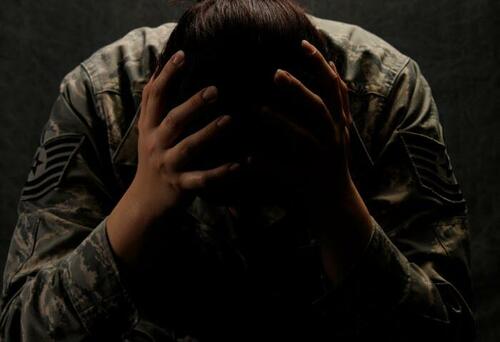
Nearly half of those serving in the U.S. military have contemplated suicide since joining the forces, according to the Iraq and Afghanistan Veterans of America (IAVA) Members 2022 report.
This is a huge jump up from the nine percent that said they had thought about taking their own life before signing up.
The following chart, from Statista's Anna Fleck, illustrates how the United States’ has a suicide crisis on its hands, which seemingly is not showing signs of abating. If anything, it has worsened, with the 2014 data recording a slightly lower 31 percent of veterans having experienced suicidal thoughts.
You will find more infographics at Statista
According to a 2021 report by Thomas Howard Suitt at Boston University, suicide rates among the active military personnel and veterans of the post 9/11 wars have been climbing in recent years. While the same trend can be said of the general public, in the military and veterans spheres it’s happening at an even faster rate.
To put this into context, estimates currently put the figure of suicides among active duty personnel and veterans of the post 9/11 wars at 30,177 - a high number, especially when considering that 7,057 U.S. service members were killed in war operations in that time.
Reasons attributed to the higher suicide rates among those in the military and veterans include the high exposure to trauma, stress, military culture and training.
However, factors such as the rise of improvised explosive devices (IEDs) and advances to medical treatment that keep service members in the military longer are also cited. Such high suicide rates, Suitt concludes, mark the “failure of the U.S. government and U.S. society to manage the mental health costs of our current conflicts.”
Nearly half of those serving in the U.S. military have contemplated suicide since joining the forces, according to the Iraq and Afghanistan Veterans of America (IAVA) Members 2022 report.
This is a huge jump up from the nine percent that said they had thought about taking their own life before signing up.
The following chart, from Statista’s Anna Fleck, illustrates how the United States’ has a suicide crisis on its hands, which seemingly is not showing signs of abating. If anything, it has worsened, with the 2014 data recording a slightly lower 31 percent of veterans having experienced suicidal thoughts.
You will find more infographics at Statista
According to a 2021 report by Thomas Howard Suitt at Boston University, suicide rates among the active military personnel and veterans of the post 9/11 wars have been climbing in recent years. While the same trend can be said of the general public, in the military and veterans spheres it’s happening at an even faster rate.
To put this into context, estimates currently put the figure of suicides among active duty personnel and veterans of the post 9/11 wars at 30,177 – a high number, especially when considering that 7,057 U.S. service members were killed in war operations in that time.
Reasons attributed to the higher suicide rates among those in the military and veterans include the high exposure to trauma, stress, military culture and training.
However, factors such as the rise of improvised explosive devices (IEDs) and advances to medical treatment that keep service members in the military longer are also cited. Such high suicide rates, Suitt concludes, mark the “failure of the U.S. government and U.S. society to manage the mental health costs of our current conflicts.”
Loading…






